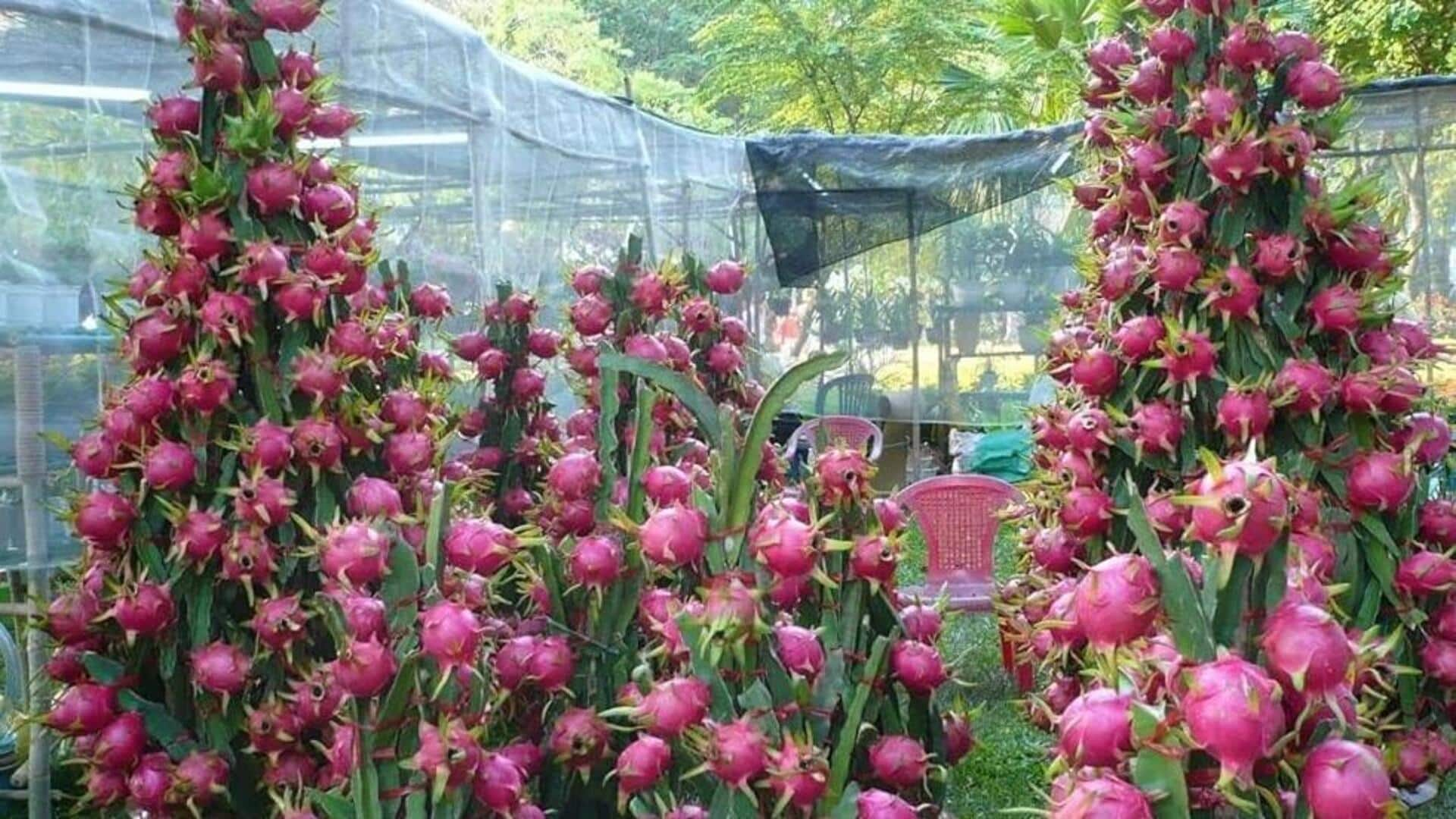
Growing exotic dragon fruit cacti indoors: A guide
What's the story
Growing dragon fruit cacti indoors can be a fulfilling hobby for greenthumbs. This tropical beauty, known for its stunning flowers and healthy treats, requires particular care to flourish. Choosing the right soil mix, providing enough light, knowing when to water, and selecting the perfect pot are key. This beginner-friendly guide offers practical tips for nurturing your very own indoor dragon fruit cacti garden.
Soil mix
Selecting the right soil mix
Dragon fruit cacti prefer a well-draining soil mix, with an ideal ratio of three parts regular potting soil to one part perlite or sand. This ratio facilitates rapid water drainage, which is vital to prevent root rot. Adding organic matter such as compost to the mix enhances the soil's fertility, supplying key nutrients for the plant's growth.
Lighting
Ensuring adequate lighting
Light is key for dragon fruit cacti, they love bright, indirect sunlight for a minimum of six hours a day. If you're growing them indoors, position them near a south-facing window or under grow lights to ensure they get enough light. A lack of light can prevent flowering and fruit production, so it's important to regularly check and adjust the plant's exposure.
Watering
Watering schedule and humidity
Dragon fruit cacti require a Goldilocks watering approach - not too much and not too little. During the growing season (spring and summer), water them when the top inch of soil feels dry to the touch. Cut back on watering in fall and winter to avoid overwatering when the plant's growth slows down. Keeping indoor humidity levels around 40-50% will emulate their native tropical environment and promote healthy growth.
Potting
Choosing the right pot and repotting
Choosing the right pot is crucial for growing dragon fruit cacti indoors. A pot with plenty of drainage holes at the bottom is essential to prevent water from pooling around the roots. Since these plants can get pretty big, a medium-sized pot (around 12 inches in diameter) will give them enough space to start, but be ready to repot every couple of years as they grow.
Pruning
Pruning and support structures
As dragon fruit plants grow, they benefit from pruning to promote branching where flowers and fruits form. This should be done with care by removing dead or overgrown stems with clean shears during late winter or early spring before new growth starts. Plus, using support structures like trellises not only helps control their size indoors but also mimics their natural climbing habit, fostering healthier growth patterns.